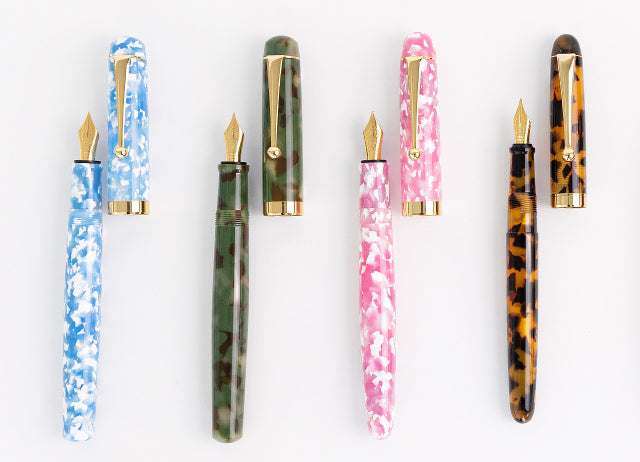
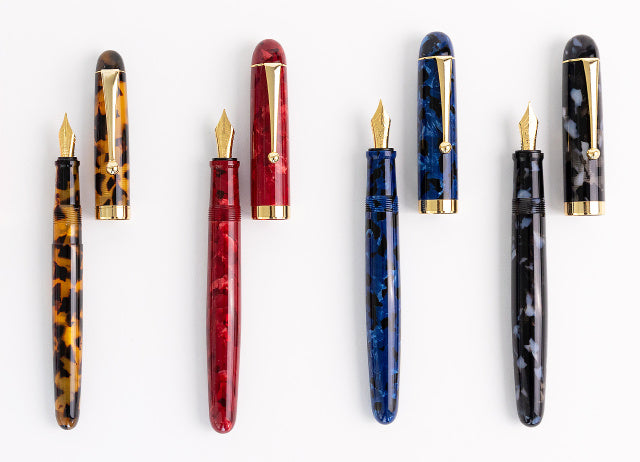

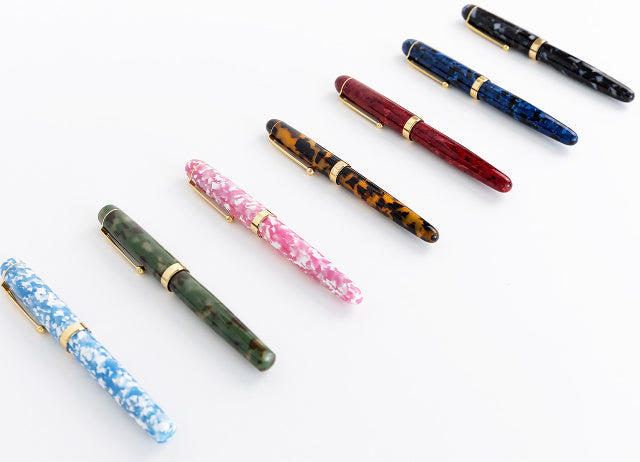
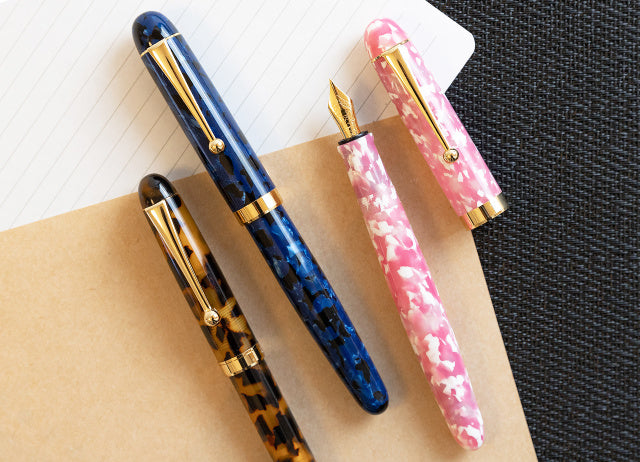
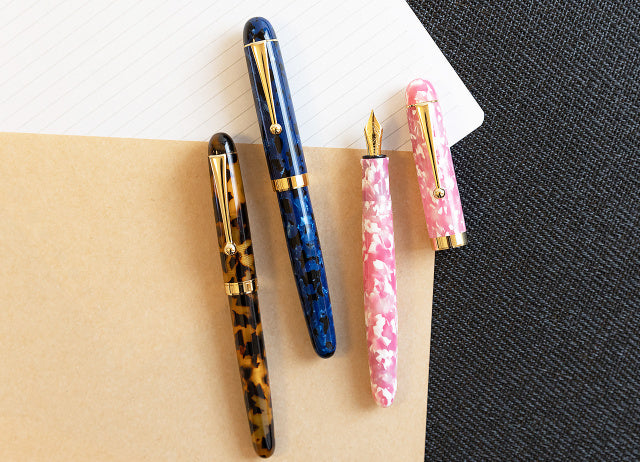
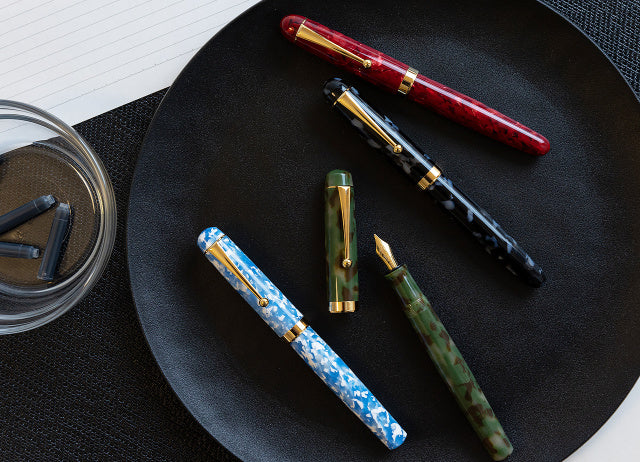
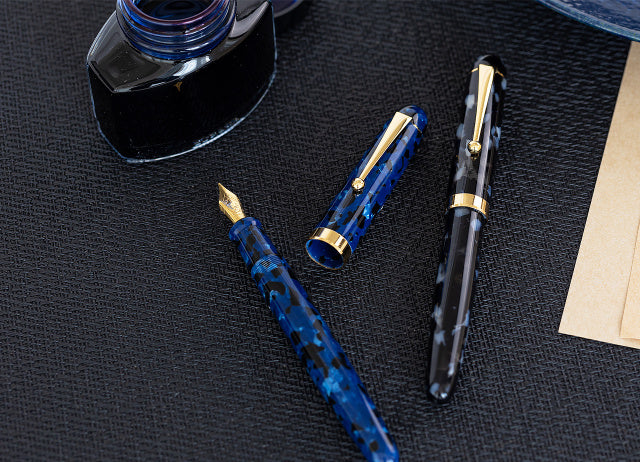
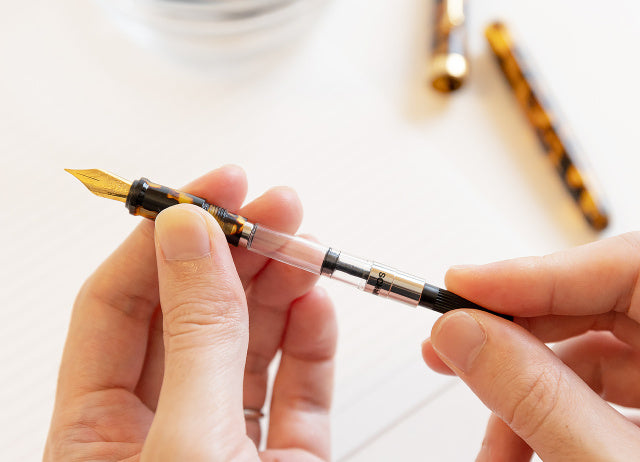
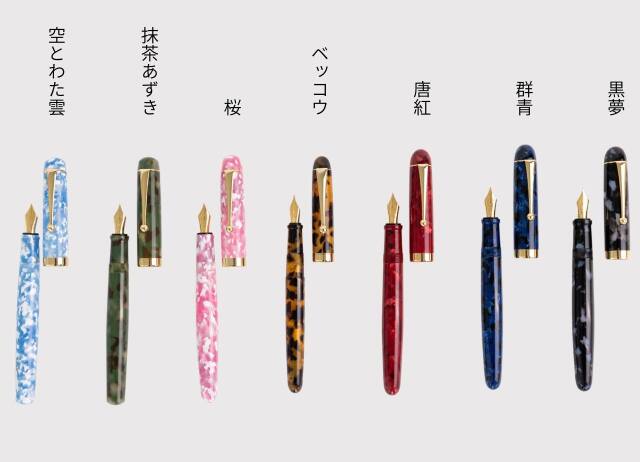
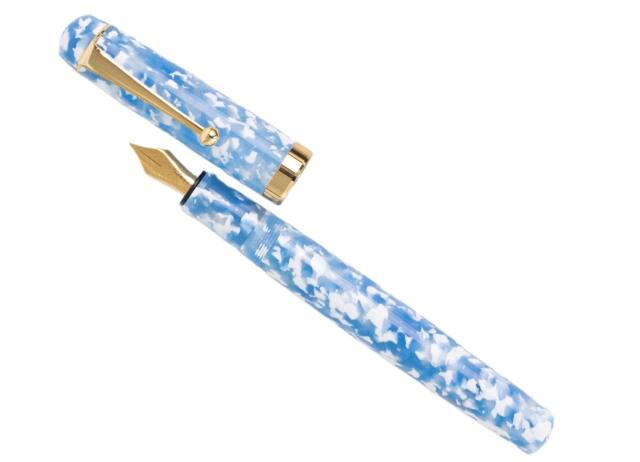
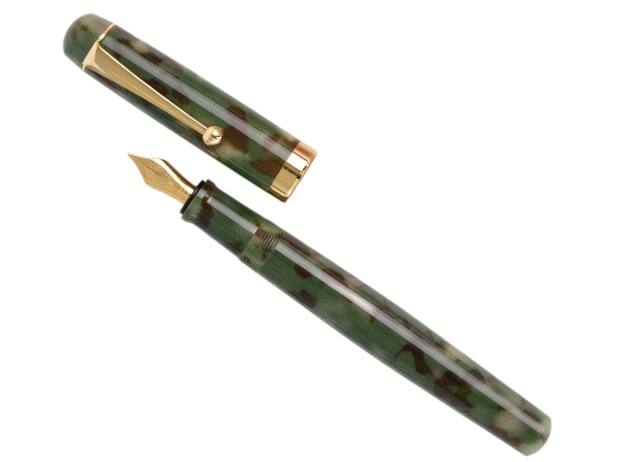
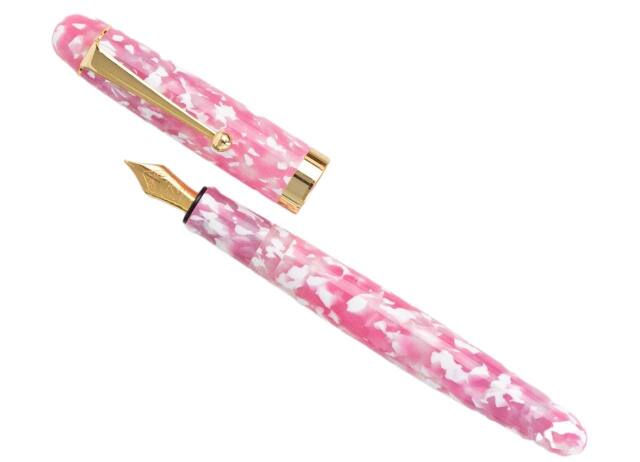
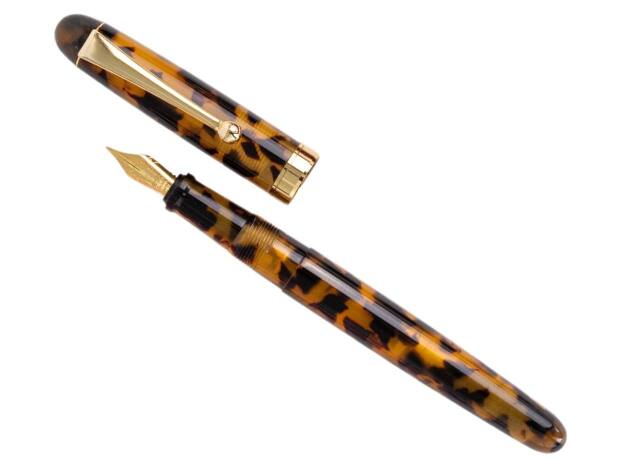
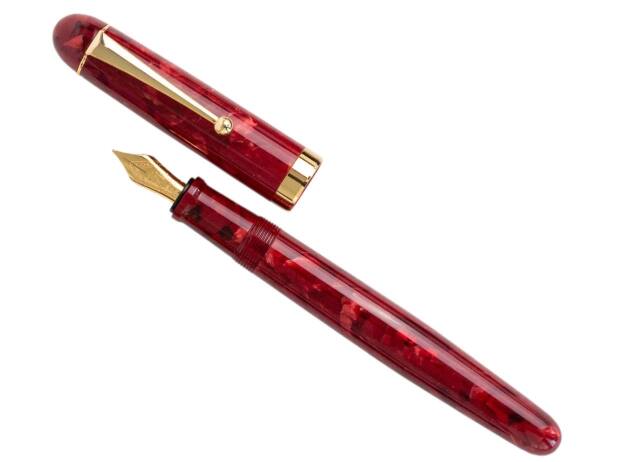
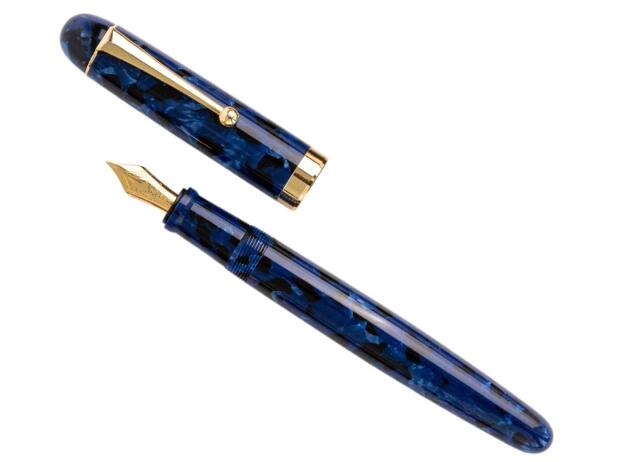
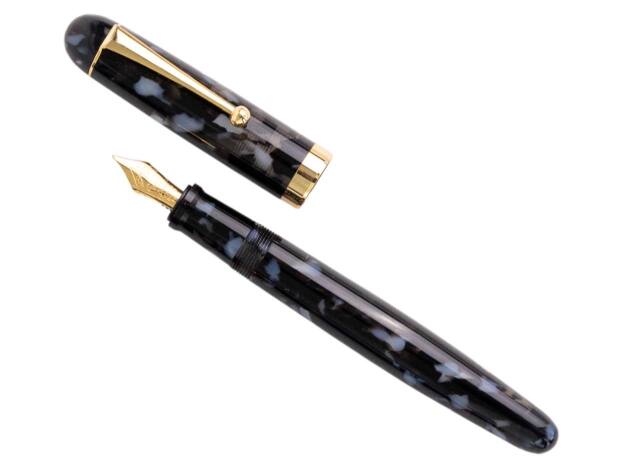
Acetate fountain pen - Oonishi Seisakusho -

The Appeal of "Handwriting"
With the use of computers and smartphones, many people have reduced writing letters on paper. In this digital age, why not reconsider the goodness of "handwriting"? Handwriting leaves vivid memories when you write, allows you to express your individuality, and can convey your feelings through characters.

And if you're going to "handwrite," you'll want to use a special writing instrument. The fountain pens created by Mr. Keizo Onishi of "Onishi Seisakusho" are lifetime masterpieces that stand out with their beautiful curves and glossy finish, showcasing the master's skill.
Accumulated Experience
Mr. Onishi became a fountain pen craftsman at the age of 15. From his mid-60s, he learned techniques under the late Mr. Kiyoshi Kato of the world-famous "Kato Seisakusho Company," who reportedly said, "There's nothing more to teach him."

After Mr. Kato's passing, he inherited the tools and established "Onishi Seisakusho." Even now, he creates each pen with heart using traditional methods.

The Gloss and Feel Unique to Acetate
The "acetate" used in acetate fountain pens is an environmentally friendly material made from natural cellulose, often used in eyeglass frames. It features high transparency, a wet-like gloss, and excellent color development. With moderate moisture absorption, its attractive feature is a smooth touch that feels like it adheres to the hand.

A Rare Craftsman Even Globally
Using specialized processing tools that require skilled techniques and know-how, these pens are created almost entirely by Mr. Onishi's handiwork. It requires advanced skills and considerable time and effort.

As a result, it's said that Mr. Onishi might be the only one still handcrafting acetate fountain pens. Apparently, there has even been a request from France seeking Mr. Onishi's technical expertise.

The nib is a German Schmidt iridium nib, known for its good writing feel. With effective flexibility, it easily creates variations in thickness of characters and lines, leaving a tasteful handwriting. The nib width is F (fine) type, with wide applications for letters, notebooks, and planners, making it recommended even for those using a fountain pen for the first time.

And as the term "ink swamp" suggests, fountain pens also offer the joy of choosing inks. The acetate fountain pen is a dual-use system with both "cartridge ink" and "converter," so you can enjoy a variety of inks.
Why not take time to nurture a one-of-a-kind fountain pen that can accompany you for a lifetime?
■ Related Products
 Acetate Ballpoint Pen - 7 types
Acetate Ballpoint Pen - 7 types

Acrylic Ballpoint Pen - Origami

Yoshino cedar ballpoint pen - cobcob -
■ Size and Specifications
Length: Approximately 138mm (when stored) / Approximately 160mm (when writing)
Maximum body diameter: Approximately 13.5mmφ
Cap diameter: Approximately 15.0mmφ (excluding clip)
Weight: About 23g
Nib: Steel nib F (fine) (Using Schmidt iridium nib)
*Compatible with both cartridge and converter (2 replacement cartridges included.
European type is compatible, e.g., Pelikan, Montblanc, etc.)

■ Packaging

■ Good Writing Instruments Deserve a Good Place to Rest
Choose options



















